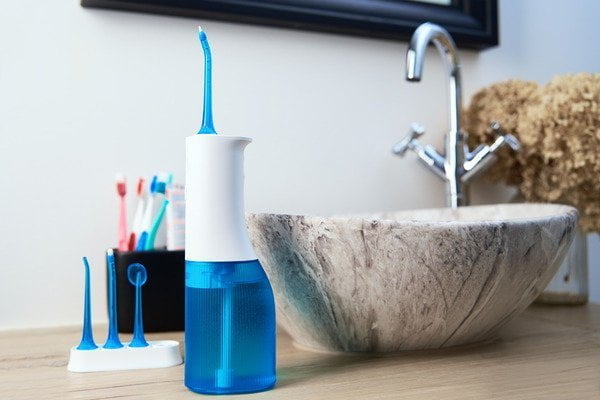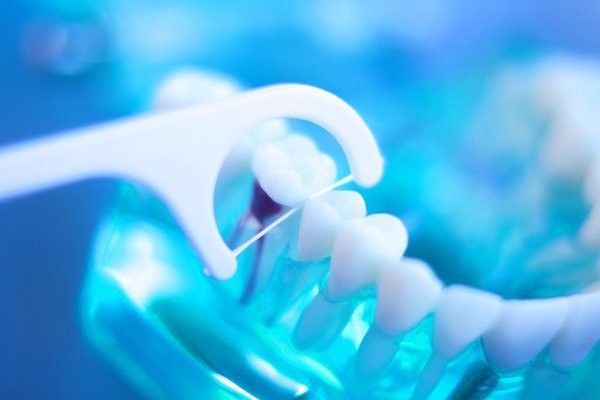In life, what works for one person might not work for someone else. The world of dentistry is much the same.
From one-off treatments to entire oral health plans, patients need tailored care that suits their unique needs.
When you go with a one-size-fits-all approach, you limit the chances of your patients achieving peak oral health and you stifle yourself from growing as a practitioner.
With the above sentiments in mind, we’ll confidently say there’s no hard and fast answer when choosing between the two best methods of interdental cleaning: water picking (also known as water flossing) and flossing. It depends on the situation, the practitioner, and the patient, as we’ll discuss below.
First, a quick refresher: why is it so important to clean between the teeth?
Why Cleaning Between The Teeth Is Essential
We all know the base-level oral health principles or rules you tell all your patients:
- Brush twice per day.
- Clean the spaces between all teeth once per day at minimum.
It’s that tricky second point that tends to get your patients confused.
Too often, people think consistent brushing alone is enough to prevent tooth loss, gum disease, bad breath, and cavities. Unfortunately, while frequent brushing is a core building block to optimal oral health, it’s not enough..
Between your teeth hide the bacteria, plaque, and food particles that evade your toothbrush’s bristles, which aren’t small enough to reach those nooks and crannies.
Instead, those areas require your patients to use one or both of the two following two tools to perform interdental cleaning:
- Dental floss
- Water pick or Water-flosser
Water Picking/Water Flossing

Let’s delve into the finer points of water picking/flossing first, before taking a closer look at the traditional method of dental floss.
What Is A Water-Flosser/Water Pick?
A water-flosser cleans away bacteria, particles, and food particles under your gums and between your teeth with pulsating water from a pressurized stream.
According to the American Dental Association, water-flossers can successfully rid teeth and gums of plaque. Thus, these tools prevent gum disease and cavities – a primary benefit of plaque removal.
Water-flossers are typically ideal for patients with dental implants, crowns, braces, or bridges.
The Right Way to Use a Water-Flosser
- Step 1:
– Fill the reservoir with warm water - Step 2:
– Press on the device’s base firmly - Step 3:
– Select a tip
– Click the tip into the handle - Step 4:
– Use the lowest pressure setting at the beginning
– While leaning over the sink, place the tip in your mouth to avoid spilling water - Step 5:
– Switch on the water-flosser
– Prevent water splashes by partially closing your mouth - Step 6:
– Allow water to flow to the sink from your mouth - Step 7:
– The tip should be aimed at your gum line - Step 8:
– Turn the device off when complete.
– To remove the tip, hit the “eject” button
Benefits Of Water Picking
Since the handle design is comfort-forward, water-flossing gives people with arthritis a comfortable option for cleaning between their teeth. It’s also good for people who happen to struggle with traditional floss strings.
These tools get into areas that can be tough to reach, such as tight spaces between teeth and gum disease-induced periodontal pockets.
Most importantly, a water-flosser can clean between the teeth without causing the gums to bleed.
Drawbacks Of Water Picking
Water-flossing doesn’t necessarily remove all plaque, and it’s far more expensive than regular floss, ranging between $35 and $100. Water-flossers can also be tough to get used to, resulting in frustrating messes and spills.
Traditional Flossing

Everybody should floss, as it’s a critical component of dental hygiene. Nowadays, floss is available in many flavours and is wax or unwaxed.
The Right Way To Floss
- Step 1:
– Wind an 18-inch piece of floss around both middle fingers - Step 2:
– Leave 1 to 2 inches between your hands by pinching the floss with your thumbs and first fingers - Step 3:
– Use both hands to pull the floss tight
– Your index fingers should create a back and forth motion - Step 4:
– Wrap the floss around the tooth and slide it up and down the tooth surfaces and beneath the gums - Step 5:
– Start at the bottom teeth and work your way to the top
Benefits Of Traditional Flossing
Flossing is the easiest, most affordable, tried-and-true way to remove plaque and food particles from your teeth. It’s also convenient to purchase, as you can find it promptly in any grocery or drug store.
Drawbacks Of Traditional Flossing
A primary issue with flossing is how tough it can be to reach some parts of your mouth. It can also cause a bit of bleeding.
Flossing might also lead to sensitive gums (or exacerbate them). The floss thread itself can be difficult to use, especially if you have arthritis.
Flossing vs. Water Picking: Which is Better?
Water picking is no substitute for flossing, but it provides unparalleled benefits to the patients that need it.
So, our final verdict is neither water picking nor traditional flossing is better.
The answer is based on your patient’s needs and oral care plan since water picking and traditional flossing provide exceptional results when used appropriately!


